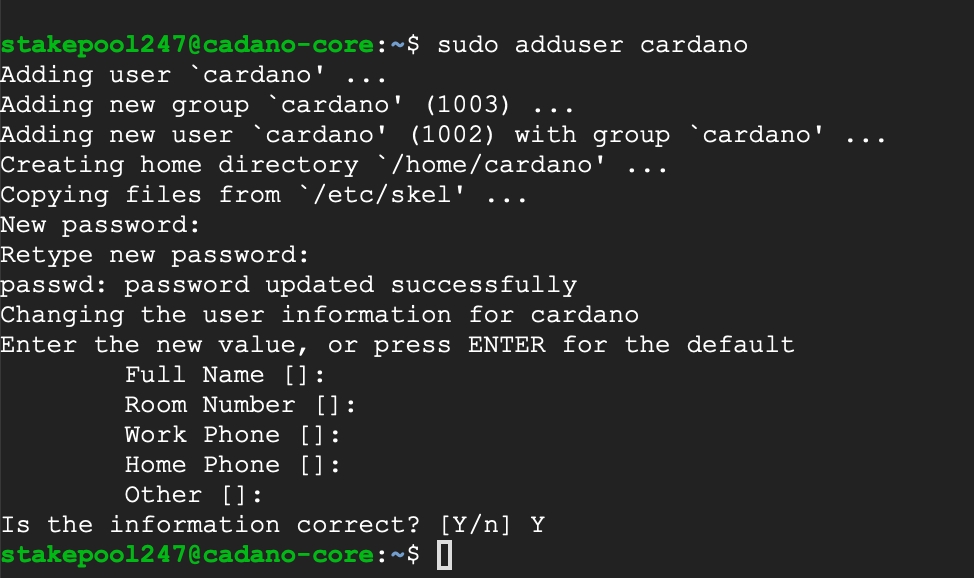Creating a user for Cardano Node
Before we start the installation process, let's create a user for our Cardano pool project. Let's name this user "cardano" and give the administrative user "power" to it.
Creating a user
Let's start by creating our new user "cardano" by typing the following command:
sudo adduser cardanoby executing this command you will be requested to enter your password and then to set a password for this user as well as additional information

Congratulations - we just created our new user! Now - let's give this user administrative power by typing this:
Great! Now the user cardano has administrative power! Whenever we need to run a command with administrative privilege- run the command by adding in front of it additional command - sudo
Let's switch to our new user:
cardano@localhost:~$
If everything goes as planned then you should be now logged in as user "cardano", let's double-check by typing:
as a reply, you should see the current user username
cardano@localhost:~$ whoami cardano
Let's check if we can execute commands with root privileges (as administrator) by typing:
cardano@localhost:~$ sudo whoami [sudo] password for cardano: xxx root
before you can execute commands as a root user, you will have to type the user's password (for Cardano user) to authenticate yourself. After authentication - you will see that the command this time was executed as a root user!
Great! We have created a user and let's proceed now to the installation process!
Last updated
Was this helpful?